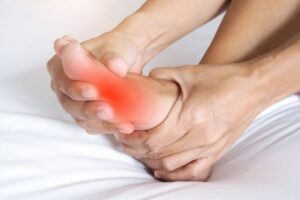 Bunion surgery, aimed at correcting the deformity of the big toe base, often involves significant post-operative care to manage pain and ensure a successful recovery. While the prospect of surgery can be daunting, understanding how to effectively mitigate pain afterwards can make the process much easier. Here are comprehensive steps to minimize discomfort and accelerate your recovery from bunion surgery.
Bunion surgery, aimed at correcting the deformity of the big toe base, often involves significant post-operative care to manage pain and ensure a successful recovery. While the prospect of surgery can be daunting, understanding how to effectively mitigate pain afterwards can make the process much easier. Here are comprehensive steps to minimize discomfort and accelerate your recovery from bunion surgery.
Immediately After Surgery
Post-surgery care begins immediately after the operation. It is crucial to arrange for someone to drive you home from the hospital, as the anesthesia’s after-effects can include disorientation and grogginess. Initially, the most important thing is to rest and keep your foot elevated:
- Stay Off Your Feet: Avoid putting weight on your operated foot to prevent exacerbation of pain and swelling.
- Foot Elevation: Keep your foot raised above heart level to reduce swelling and discomfort.
- Cooling Therapy: Apply ice packs wrapped in a cloth to the surgical area to numb the pain and control swelling.
Recovery Outlook
Recovering from bunion surgery typically involves several stages:
- First Two Weeks: You will likely wear a surgical boot or cast to immobilize your foot and keep the stitches protected from moisture and infection.
- Six to Eight Weeks: This period is critical as the bones and tissues heal and begin to realign properly. Limited mobility and care are essential.
- Up to Six Months: Full recovery can take several months, during which gradual reintroduction to normal activities is recommended.
Reducing Pain After Surgery
Managing post-surgery pain is crucial for a comfortable recovery:
- Appropriate Footwear: Post-surgery shoes should be roomy and soft with a wide toe box to avoid pressure on the healing bunion.
- Medication: Depending on your pain level, over-the-counter pain relievers or prescribed medications may be necessary.
- Ice Application: Regularly applying ice to the area can significantly reduce pain and swelling.
- Elevation: Continuously elevating your foot when seated helps decrease swelling and pain.
Long-Term Management and Care
- Physical Therapy: Engaging in physical therapy can help restore the toe’s function and flexibility.
- Follow-Up Visits: Regular check-ups with your surgeon are essential to monitor the healing process and prevent complications.
- Gentle Exercises: Once approved by your doctor, start with gentle stretching exercises to improve range of motion.
Conclusion
Recovery from bunion surgery can be a long and at times painful process, but with the right strategies, you can significantly ease your discomfort and expedite your return to daily activities. It’s important to follow your surgeon’s instructions closely and be patient with the healing process.
Contact Southwest Foot & Ankle
If you’re experiencing persistent pain after bunion surgery, or need expert advice on managing your condition, the specialists at Southwest Foot & Ankle are here to help. Contact us today to schedule your consultation and take your first step towards pain-free recovery.
Don’t suffer from post-bunion surgery pain. Book your appointment today by calling our offices in Plano, Lewisville, Irving or DeSoto. Experience the relief and support you need during your recovery.
Contact us
Schedule an appointment
with our podiatrist by contacting us or calling our:
